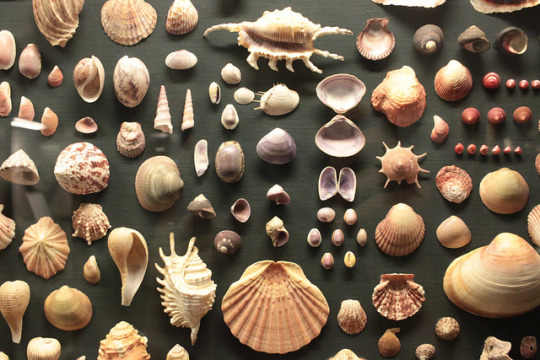Text

Here's another scan from Dance's Animal Fakes & Frauds, since the first one was so popular. The White-Russian shore-muddler was exhibited in the Gothenburg Natural History Museum at the beginning of April for a number of years starting in 1963. It was the brainchild of the museum's director, Dr. Bengt Hubendick, but no source seems to record the name of the taxidermist who made it a (false) reality.
#vitrysk strandmuddlare#white russian shore muddler#göteborgs naturhistoriska museum#gothenburg natural history museum#animal fakes & frauds#s peter dance#bengt hubendick#photographer unknown#taxidermy#hoax#prank#fearsome critters#not technically#but some sources place it in that category
46 notes
·
View notes
Text

My BFF says hello, @probably-an-alien ! Coincidentally, I had some business at the museum of natural history in Gothenburg today. 😉
#whales#sperm whale skeleton#sperm whale#museum#whale bones#animal bones#wonders of nature#natural history#favorite places
15 notes
·
View notes
Text
me and natural history museums, an everlasting love story










vienna-gothenburg-paris
#natural history#museum#museumcore#natural history museum#whale sub#giant sloth#blue whale#paris#vienna#paleontology#zoology#biology
3 notes
·
View notes
Text
Tagged by @ralphforleader, thank you so much!
Rules: tag 10 (or less) people @deinde-prandium @theladyfae @miabrown007 @swxxtcidxr @robylovi @hanaasbananas
Relationship status: Happily single and utterly uninterested in romantic relationships
Favourite colour: Purple, although I'm very partial to midnight blue and gold
Song stuck in my head: Asshole by Rilo Kiley
Three favourite foods: Orange sesame chicken-style quorn, popcorn prawns, margarita pizza
Last song I listened to: Asshole by Rilo Kiley (that's presumably why it's stuck in my head lol)
Dream trip: I have a sort of. Whale tour idea where I just go to places with cool whale things happening. Gothenburg, Sweden to see the stuffed whale. The Natural History Museum in New York City to see their statue (currently the most accurate statue in the world!). Florence, Oregon to visit Exploding Whale Park. L.A., California to watch feeding blue whales in the summer. Follow them down to the Costa Rica Dome on their winter migration. Whales are just fuckin' cool, man.
Last thing(s) I googled: 'what do you call it when you are single on purpose' because I thought there might be a word. I just got a bunch of blog articles that were like "aw it's okay to be single" like babe I know. I'm doing this on purpose.
9 notes
·
View notes
Text
Events 10.29 (after 1950)
1953 – BCPA Flight 304 DC-6 crashes near San Francisco. 1955 – The Soviet battleship Novorossiysk strikes a World War II mine in the harbor at Sevastopol. 1956 – Suez Crisis begins: Israeli forces invade the Sinai Peninsula and push Egyptian forces back toward the Suez Canal. 1957 – Israel's prime minister David Ben-Gurion and five of his ministers are injured when Moshe Dwek throws a grenade into the Knesset. 1960 – An airplane carrying the Cal Poly football team crashes on takeoff in Toledo, Ohio. 1964 – The United Republic of Tanganyika and Zanzibar is renamed to the United Republic of Tanzania. 1964 – Biggest jewel heist; involving the Star of India (gem) in the American Museum of Natural History in New York City by Murph the Surf and gang. 1967 – Montreal's World Fair, Expo 67, closes with over 50 million visitors. 1969 – The first-ever computer-to-computer link is established on ARPANET, the precursor to the Internet. 1972 – The three surviving perpetrators of the Munich massacre are released from prison in exchange for the hostages of the hijacked Lufthansa Flight 615. 1980 – Demonstration flight of a secretly modified C-130 for an Iran hostage crisis rescue attempt ends in a crash landing at Eglin Air Force Base's Duke Field, Florida, leading to the cancellation of Operation Credible Sport. 1985 – Major General Samuel K. Doe is announced as the winner of the first multi-party election in Liberia. 1986 – British Prime Minister Margaret Thatcher opens the last stretch of the M25 motorway. 1991 – The American Galileo spacecraft makes its closest approach to 951 Gaspra, becoming the first probe to visit an asteroid. 1994 – Francisco Martin Duran fires over two dozen shots at the White House; he is later convicted of trying to kill U.S. President Bill Clinton. 1998 – In South Africa, the Truth and Reconciliation Commission presents its report, which condemns both sides for committing atrocities. 1998 – Space Shuttle Discovery blasts off on STS-95 with 77-year-old John Glenn on board, making him the oldest person to go into space at that time. 1998 – ATSC HDTV broadcasting in the United States is inaugurated with the launch of the STS-95 space shuttle mission. 1998 – While en route from Adana to Ankara, a Turkish Airlines flight with a crew of six and 33 passengers is hijacked by a Kurdish militant who orders the pilot to fly to Switzerland. The plane instead lands in Ankara after the pilot tricked the hijacker into thinking that he is landing in the Bulgarian capital of Sofia to refuel. 1998 – Hurricane Mitch, the second deadliest Atlantic hurricane in history, makes landfall in Honduras. 1998 – The Gothenburg discothèque fire in Sweden kills 63 and injures 200. 1999 – A large cyclone devastates Odisha, India. 2002 – A fire destroys a luxurious department store in Ho Chi Minh City, where 1,500 people are shopping. More than 60 people die and over 100 are unaccounted for in the deadliest peacetime disaster in Vietnam. 2004 – The Arabic-language news network Al Jazeera broadcasts an excerpt from a 2004 Osama bin Laden video in which the terrorist leader first admits direct responsibility for the September 11, 2001 attacks and references the 2004 U.S. presidential election. 2005 – Bombings in Delhi, India kill more than 60. 2008 – Delta Air Lines merges with Northwest Airlines, creating the world's largest airline and reducing the number of US legacy carriers to five. 2008 – A pair of deadly earthquakes hits Baluchistan, Pakistan, killing 215. 2012 – Hurricane Sandy hits the east coast of the United States, killing 148 directly and 138 indirectly, while leaving nearly $70 billion in damages and causing major power outages. 2014 – A mud slide; the 2014 Badulla landslide, in south-central Sri Lanka, kills at least 16 people, and leaves hundreds of people missing. 2015 – China announces the end of its one-child policy after 35 years. 2018 – A Boeing 737 MAX plane crashes after taking off from Jakarta, Indonesia killing 189 people on board.
2 notes
·
View notes
Text
10 Epic activities to do in the Sweden
Sweden offers a wealth of epic activities that cater to every traveller’s taste. From the vibrant city life of Stockholm's Gamla Stan, where historic charm meets modern convenience, to the awe-inspiring Icehotel in Jukkasjärvi, where visitors can sleep in rooms crafted entirely from ice, Sweden promises unique experiences at every turn. For those seeking adventure, Lapland beckons with exhilarating dog sledding excursions across pristine snowscapes, while Abisko National Park enchants with its hiking trails and the mesmerizing Northern Lights dancing in the Arctic sky. The Göteborg Archipelago offers a tranquil escape with its scenic islands and vibrant coastal culture, perfect for boat trips and seaside relaxation.

History buffs can explore Visby's medieval treasures on the island of Gotland, a UNESCO World Heritage Site renowned for its ancient city walls and Hanseatic architecture. Meanwhile, Åre provides adrenaline-pumping skiing and snowboarding opportunities in Scandinavia's largest ski resort. For a truly unique stay, the Tree hotel in Harads offers futuristic treehouse accommodations amidst the tranquil forest, blending luxury with eco-friendly design. Finally, Laponia's UNESCO World Heritage Site status celebrates its vast wilderness and rich Sami cultural heritage, making Sweden a destination brimming with unforgettable adventures and cultural experiences.
Here are some epic activities to do in Sweden.
1. Explore Gamla Stan in Stockholm:

Gamla Stan, or Stockholm's Old Town, is a must-see because of its quaint little alleyways, vibrant architecture, and important historical locations like Stortorget Square and the Royal Palace. Explore museums, stroll down cobblestone streets, and take pleasure in quaint cafes and stores.
2. Take a look at the Vasa Museum:
The amazingly preserved warship Vasa, which sank on her maiden voyage in 1628 and was reconstructed centuries later, is housed in Stockholm's Vasa Museum. With interactive exhibits and in-depth details about the ship's restoration, it offers an intriguing look into Sweden's maritime past.
3. Take a look at the Jukkasjärvi Icehotel:
Every year, ice from the Torne River is used to rebuild the Icehotel, which is situated in the village of Jukkasjärvi. Aside from marvelling at ice creations, guests can partake in ice sculpting workshops and stay in accommodations composed completely of ice and snow. The Arctic is like no other.
4. Take a Lapland dog sled ride:

There is dog sledding available in Lapland's untainted nature. Experience the exhilaration of being dragged through snow-covered terrain by huskies or Sami reindeer herding dogs while taking in the breathtaking beauty of the Nordic region.
5. A stroll around Abisko National Park:
The Abisko Canyon and the Northern Lights are two of the park's most striking features. Abisko National Park is located in Swedish Lapland. Hiking routes offer stunning views of mountains, lakes, and Arctic vegetation and range in difficulty from leisurely strolls to strenuous treks.
6. Go around the archipelago of Göteborg:

The gorgeous Göteborg Archipelago, which consists of more than 20 islands with charming fishing villages, sandy beaches, and serene nature reserves, is located just off the coast of Gothenburg. Go kayaking, take boat rides, or just kick back and take in the views along the coast.
7. Appreciate the Medieval Charm of Visby:
Visby, a UNESCO World Heritage Site located on the island of Gotland, is well known for its Hanseatic architecture, cobblestone lanes, and intact medieval city walls. Take a trip back in time by visiting historical cathedrals, museums, and the yearly Medieval Week.
8. Åre ski resort:
The largest and most well-known ski resort in Scandinavia, Åre, has a variety of slopes suitable for skiers of all ability levels. Experience the breathtaking mountain environment while engaging in activities like skiing, snowboarding, snowmobiling, and après-ski, regardless of your skill level.
9. Go to the Harads Treehotel:

Various architects have created distinctive treehouse accommodations at the Treehotel in Harads. Saddle up in treetop accommodations such as the Mirrorcube or the UFO, and take in expansive vistas of the Lule River Valley. It is a peaceful forest environment that combines eco-friendly architecture with opulence.
10. Take a tour of the Laponia UNESCO World Heritage Site:
A UNESCO World Heritage Site, Laponia, or Swedish Lapland, is distinguished by its ecological and cultural value. Explore sizable wilderness regions, the cultural legacy of the Sámi people, and distinctive ecosystems like the Tavvavuoma mountain. Hiking, wildlife viewing, and experiencing traditional Sami culture are all highly recommended.
Conclusion
In conclusion, Sweden stands out as a captivating destination, offering a wide array of epic activities for travelers. Whether exploring Stockholm's historic charm, witnessing the Northern Lights in Abisko, or experiencing the thrill of skiing in Åre, Sweden promises unforgettable adventures. Visiting Sweden is straightforward for many travelers, as it is part of the Schengen Area, allowing visitors from many countries to enter without a Sweden visa for short stays. This accessibility enhances Sweden's appeal as a travel destination, welcoming visitors to explore its natural beauty, cultural heritage, and unique experiences. For those seeking a blend of luxury and nature, the Icehotel in Jukkasjärvi and the Treehotel in Harads offer exceptional stays amidst Arctic landscapes. Meanwhile, cultural enthusiasts can delve into Visby's medieval history or immerse themselves in the indigenous Sami traditions of Laponia. Overall, Sweden's diverse attractions cater to all interests and seasons, making it an ideal destination year-round. Whether for adventure, relaxation, or cultural exploration, Sweden's epic activities ensure a memorable journey for every traveler.
Read More:
Canada visa south korea visa Japan visa Bangladesh visa Belgium Visa
0 notes
Text
The best cities you must visit in Sweden
Sweden beckons with its enchanting blend of natural beauty and urban sophistication. From the vibrant streets of Stockholm, where historic architecture meets modern design, to the serene landscapes of Lapland, where the Northern Lights dance across the sky, Sweden offers an unforgettable journey. Explore its pristine lakes and forests, indulge in its rich cultural heritage, and savor the warmth of its people amidst a backdrop of innovation and sustainability. Whether you seek adventure or tranquility, Sweden promises an experience that resonates long after you leave its shores.
Here are some of the best cities you should consider visiting in Sweden:

Stockholm:
The capital city and one of the most beautiful in Europe, built on 14 islands connected by bridges. Visit Gamla Stan (the Old Town), the Vasa Museum, and Djurgården Island.
Gothenburg (Göteborg):
Located on the west coast, Gothenburg is known for its canals, botanical gardens, and the Liseberg amusement park. Don't miss the seafood at the Feskekôrka fish market.
Malmö:
Sweden's third-largest city, located in the south, known for its modern architecture like the Turning Torso skyscraper. Visit Malmö Castle and the beautiful Ribersborg Beach.
Uppsala:
A historic city with one of Europe's oldest universities, Uppsala Cathedral, and the impressive Gamla Uppsala archaeological site with Viking-era royal mounds.
Visby:
Located on the island of Gotland, Visby is a UNESCO World Heritage Site known for its well-preserved medieval city walls and cobblestone streets.
Kiruna:
Located in Swedish Lapland, Kiruna is known for its unique Arctic landscape, the ICEHOTEL, and opportunities to see the Northern Lights during winter.
Lund:
A charming university town with a rich history, Lund is known for Lund Cathedral, the Botanical Garden, and its vibrant student culture.
Östersund:
Situated in the middle of Sweden, Östersund is known for its beautiful lake, Lake Storsjön, and offers opportunities for skiing, hiking, and outdoor activities.
Karlstad:
Located on the shores of Lake Vänern, Karlstad is a picturesque city with sandy beaches, a thriving food scene, and opportunities for outdoor recreation.
Helsingborg:
A coastal city in southern Sweden with beautiful gardens, historic landmarks like the medieval fortress of Kärnan, and ferry connections to Denmark.
Conclusion
Exploring the best cities in Sweden promises a tapestry of experiences, from Stockholm's royal elegance to Gothenburg's vibrant cultural scene and Malmö's cosmopolitan charm. Each city offers a unique glimpse into Sweden's rich history and modern dynamism, making them must-visits for any traveler. Ensure a seamless journey by checking Sweden visa requirements beforehand, ensuring your adventure unfolds smoothly amidst this Nordic wonderland.
Read More:
south korea visa Egypt visa Norway visa Finland visa Germany visa
0 notes
Text
Avatar in Gothenburg (or: Hometown Shows Are The Best)

So. I recently travelled to Sweden for the first time, and I still feel the need to gush about that trip a little bit. Given my love for metal music it’s really not surprising that I’ve been itching to travel to Scandinavia for quite some time now – a lot of my favorite bands come from there after all. But I never actually managed to make it work, so far (something, something poor student, something, something not comfortable travelling alone yet).
But when I saw my beloved Avatar announcing a show in their hometown of Gothenburg, I knew that was a sign to finally get off my ass! Everything just aligned too perfectly:
Avatar happens to be one of my current top bands and is well worth travelling for.
Gothenburg, being a true heavy metal powerhouse, happens to be one of my dream destinations in Scandinavia.
The date happens to fall on a long weekend (the best thing about German Carnival), so I barely have to take time off work.
Travelling on that specific weekend allows me to escape from manmade horrors beyond comprehension happening at home (aka German Carnival).
So as a birthday gift to myself I decided to go for it. That’s obviously the universe talking, and who would I be to stand against the will of the universe, right? It may not be the cheapest concert trip I’ve done, but boy, it was worth it!
I’m not exaggerating when I say I immediately fell in love with that city. I’ve always said that if I am ever to emigrate somewhere, I’d probably choose Sweden, and after this trip I stand by my words even more! I don’t know if it makes any sense for anyone else but me, but the city felt as if Prague and Reykjavik had a lovechild – the beautiful architecture you’d find in the former combined with the distinctively Nordic and cozy flair of the latter. And bonus points for feeling very safe!
My personal highlights definitely included the Slottsskoggen (a well-kept park that still allowed me to feel like I was wandering around a Swedish forest, and included a little zoo where I got to see some elks strutting through the snow), the Natural History Museum (I don’t think my brain will ever process the sheer size of blue whales – and why has Gojira conditioned me to feel the need to scream about whales in the sky from the top of my lungs whenever I see the tiniest reference to whales??) and the Haga main street. That one admittedly felt a little touristy, but one the other hand I got to try a cinnamon roll bigger than the size of my face, so maybe the tourists are right on this one. I also stumbled across this amazing bookshop in the city specialized in fantasy/sci-fi literature and merch and it was everything my nerdy fangirl heart desires. Sadly (or luckily), my limited luggage space kept me from buying half the store but another reason to come back another time!

Now, to the concert itself: As is my duty, I arrived a few hours early at the venue, around 3 pm. People weren’t too eager to wait around in the snow, so there were only a handful of other fans when I arrived. I expected mostly Swedes, but to my pleasant surprise I wasn’t the only crazy person who travelled from abroad for this show: I met a few girls form Austria, another fellow German, and even two girls from the US and Brazil, respectively. Now that’s what I call dedication!
Chatting with these lovely people time flew by quickly and in the blink of an eye, it was 5:30 pm and doors opened. That was quite the mess, unfortunately: The venue had a “absolutely-no-bags-at-all" rule – not even a small fanny pack was allowed inside. I could deal with that, even if it’s highly impractical, but is it too much to ask to put this kind of information on the venue website beforehand instead of telling us 20 minutes before doors? Luckily, I managed to sprint over to my hotel room , throw my stuff on the bed, and run back in time, but I could have lived without that kind of stress (also I feel sorry for all the people who didn’t have that option, no idea what they were supposed to do with their bags??).
Otherwise, everything went well, though, and I could march through to secure my spot at the barrier.
Now, this wasn’t my first time seeing Avatar this year, so I knew what to expect from thereon on. The opening act Aether Realm was enjoyable: More so than in Cologne, I’d say, maybe they needed a few shows to really get in the groove. Or maybe it's just my own perception, because I was hearing them for the second time now. And the main act obviously delivered as well.
It makes no difference how often I’ve seen Avatar in the past two years – they are just a ridiculously fun band. They know how to put on a show, and how to perfectly balance the jokey shenanigans around and danceable melodies with uncompromising, deliciously heavy riffs. My neck admittedly hates them (it’s always a little stiff the following days), but hey, that’s the price I’m willing to pay – I physically can’t stop from banging my head when Bloody Angel hits.
Regarding the setlist – it may not be my favorite and I was hoping they’d change it up more from last year. Maybe switch Do you feel in control and idk Chimp Mosh Pit for Gotta Wanna Riot and On the Beach? Or give Hunter Gatherer more space (that album is egregiously underrepresented in the setlist, especially since it never got a proper tour in Europe, thanks covid)? Buuuut I am just super happy that Paint me Red is back on the menu and When the Snow Lies Red got to stay! Honestly, Avatar could pick whatever from their catalogue and it would be worth the while, they just are that brilliant.
What I loved most about this show was that you could really feel: This is their homebase. Obviously, I couldn’t understand a word of their in-between songs banter, so who knows if they actually said anything different compared to other shows (after all Johannes is right: his German is leagues better than my Swedish), but I didn’t need that to see that the crowd was loving it. In general, the energy was top notch – moshing, enthusiastic singing and screaming along, headbanging galore, what more could you wish for. And barely any annoying crowd surfers!
An awesome experience all around, and hard to beat when I see them again in two weeks!
-S-
1 note
·
View note
Text
How do you plan budget-friendly tours to Scandinavia?
Are you dreaming of exploring the stunning landscapes, rich history, and vibrant cultural heritage of Scandinavia without breaking the bank? Look no further! In this blog, we'll delve into the art of crafting budget-friendly tours to Scandinavia, where breathtaking fjords, picturesque cities, and charming towns await.
From navigating the unique cost of living in countries like Norway, Sweden, and Denmark to uncovering hidden gems and affordable accommodations, we'll equip you with invaluable tips and insights to ensure an unforgettable Scandinavian adventure that won't drain your wallet. Get ready to discover the magic of Scandinavia without the financial stress!
Scandinavia as a Budget Destination
Scandinavia, which includes Sweden, Norway, Finland, and Denmark, has a reputation for being an expensive region to visit. It's true that Scandinavia has some of the highest costs of living in Europe, and tourists used to luxurious vacations may end up shelling out quite a bit of money here.
However, budget-conscious travellers can absolutely plan affordable trips to Scandinavia. While you may have to forego luxury hotels and Michelin-starred restaurants, the natural beauty of fjords, glaciers, forests, and mountains doesn't cost anything to enjoy. The lively cosmopolitan cities like Stockholm, Oslo, and Copenhagen offer free museums and galleries, vibrant nightlife, and delicious street food options for reasonable prices.
With some smart planning, the Nordic countries can provide an unforgettable vacation without breaking the bank. The key is focusing your itinerary on free outdoor activities, local culture, and budget-friendly transportation and dining. Armed with the right strategies, you can experience Scandinavia's fairytale landscapes, cutting-edge design, and warm hospitality on a budget.
Plan Your Time of Year
The time of year you choose to visit Scandinavia will have a big impact on the weather you experience and the prices you'll pay.
Summer months bring the warmest weather and long hours of daylight, but prices also peak during this high season. Hotels, tours, and flights can be significantly more expensive in July and August. The weather is ideal for exploring cities like Copenhagen or Stockholm, hiking scenic trails, and enjoying Scandinavia's beautiful coastlines. However, the crowds and costs make summer less than ideal for budget travellers.
Spring and fall offer a better bang for your buck. You'll find lower prices on accommodations and airfare outside of peak months. From May through early June, and September through October, the weather is still relatively mild. Daylight hours are a bit shorter than in summer, but you'll avoid the most intense crowds and expenses. This "shoulder season" is arguably the best time for budget-friendly touring.
For the deepest discounts, consider a winter trip from November to March. Hotel rates and airfares can be slashed dramatically during these cooler, darker months. But winter isn't for everyone; the days are short, and some tourist activities may be limited. If you don't mind bundling up to save money, winter can be an affordable time to experience Scandinavia. Just be strategic by focusing your itinerary on major cities.
Prioritise Your Destinations
Scandinavia is comprised of three main countries: Sweden, Norway, and Denmark. While all offer incredible natural scenery and historic cities, trying to visit more than one or two countries during a budget trip can quickly become unaffordable.
Focus your itinerary on just one or two countries to make the most of your limited time and money. Typically, Sweden and Denmark are more budget-friendly options compared to Norway. Sweden has youth hostels in Stockholm and Gothenburg, while Copenhagen, Denmark, offers more budget accommodations and free attractions.
Start your trip in the more affordable cities before making your way to the scenic but pricey Norwegian Fjords if you have some flexibility. This allows you to get the flavour of each country without overextending your budget. Staying within a defined region also minimises transportation costs between countries.
With some strategic planning, you can see the highlights of Scandinavia without breaking the bank. Define your must-see destinations, focus on 1 or 2 countries, and start in the more budget-friendly cities. This approach maximises your experience while keeping costs down.
Choose Budget Accommodations
When planning tours to Scandinavia on a budget, one of the biggest expenses will be accommodations. Hotels in Scandinavia can be very expensive, especially in popular cities like Stockholm and Copenhagen. The good news is that there are plenty of budget-friendly alternatives to hotels.

Hostels
Hostels are one of the most affordable accommodation options. Scandinavian hostels are generally very nice, with private rooms in addition to dorms. Many hostels have communal kitchens, so you can save money by cooking some of your own meals.
Apartment Rentals
Renting an apartment through Airbnb or VRBO can be cheaper than a hotel, especially if you're travelling with a group. Scandinavian apartments tend to be modern and well-equipped. Consider staying a bit outside the city centre to get more affordable rates.
Use Public Transportation
Getting around Scandinavia on trains, buses, and ferries is easy and affordable. Public transportation makes it simple to travel between destinations without the cost of renting a car or taking flights.
Within cities, walking and biking are the best ways to explore. Copenhagen and Stockholm are very bike-friendly, with miles of dedicated bike lanes throughout each city. Oslo and Bergen are extremely walkable as their city centres are compact. Wear good walking shoes to traverse the cobblestone streets.
For going between cities and countries, trains and buses are reliable and comfortable. Book tickets in advance for the lowest fares on specific routes. The Eurail Scandinavia Pass offers unlimited train travel if you plan to hop between multiple cities.
Ferries connect Denmark, Sweden, and Norway across the Baltic Sea and make for scenic journeys. The overnight Copenhagen-Oslo ferry lets you save money on a night's accommodation while travelling.
Scandinavia's user-friendly public transportation network makes budget travel achievable. You can comfortably get around without the expense of driving or flying.
Find Free Activities
Scandinavia offers many free and budget-friendly activities for travellers looking to explore the region's natural beauty and culture. Focus your itinerary on free options to save money:
Hiking - Scandinavia is known for its stunning natural landscapes. Go hiking in Norway's fjords, Sweden's forests, or Denmark's coastal trails. The scenery is an attraction in itself. Pack a picnic lunch and spend the day immersed in nature.
Parks - World-class parks like Tivoli Gardens in Copenhagen, the Vasa Museum in Stockholm, and Vigeland Sculpture Park in Oslo offer free admission. Wander through gardens, enjoy sculptures and architecture, people-watch, or relax on the grass.
Museums - Many top museums offer free entry on certain days of the week or after a certain hour. Check schedules online for the National Museum of Denmark, the National Museum of Art, Architecture and Design in Oslo, and more. Time your visit to take advantage of free hours.
Walking Tours - Look for free walking tours in major cities like Stockholm, Copenhagen, and Bergen. They provide an overview of top attractions and history from a local guide. Tipping is customary if you find it helpful.
Markets - Outdoor markets for local foods, handicrafts, antiques, and more provide an authentic taste of Scandinavian culture. Copenhagen's Norreport market, Bergen's fish market, and Stockholm's Östermalm Food Hall offer hours of free entertainment.
Avoid expensive guided tours, theme parks, performances, or adventure sports. Focus your free time on sightseeing in nature, parks, monuments, and museums to control costs. With stunning scenery and world-class museums, Scandinavia rewards budget travellers with unforgettable experiences.
Pack Light
One of the best ways to save money on tours to Scandinavia is to pack light. With budget airlines charging high fees for checked bags, minimising your luggage is a great way to avoid extra costs. Try to fit everything you'll need into a carry-on bag that you can bring onboard flights and easily manoeuvre around on public transportation.
Pack versatile clothing like t-shirts, jeans, and sweaters that you can layer and mix and match. Limit your shoes to a pair of walking or hiking shoes and some sandals or nice shoes if needed. Only bring essential toiletries and medications to save space. If you'll be travelling for an extended period, plan to do laundry locally at laundrettes, hostels, etc. This allows you to pack less clothing and reuse items. Some accommodations may even offer laundry services.
By packing light, you'll save on luggage fees, be more mobile during your travels, and reduce your load if you'll be covering ground on foot. It takes some planning, but the cost savings are well worth it.
Conclusion
Planning a budget-friendly tour to Scandinavia is not just about saving money; it's about unlocking the secrets to affordable exploration in one of the most captivating regions on Earth. By harnessing the power of early research, strategic accommodation choices, and tapping into local expertise, you can navigate the stunning landscapes and vibrant cultures without breaking the bank.
Remember, Scandinavia's allure lies not only in its picturesque landscapes but also in the warmth of its people and the rich history waiting to be discovered. So, pack wisely, embrace the journey, and let your budget-friendly adventure through Scandinavia unfold, creating memories that will last a lifetime.
Source: How do you plan budget-friendly tours to Scandinavia?
0 notes
Text
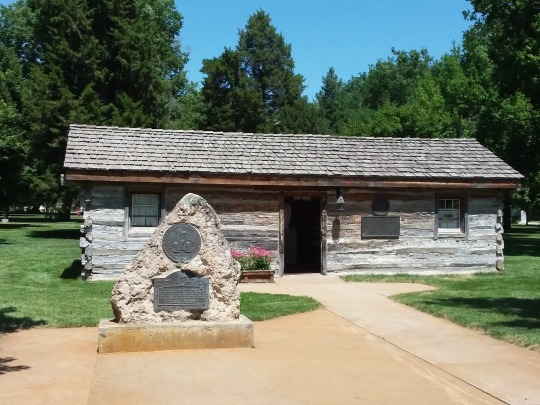
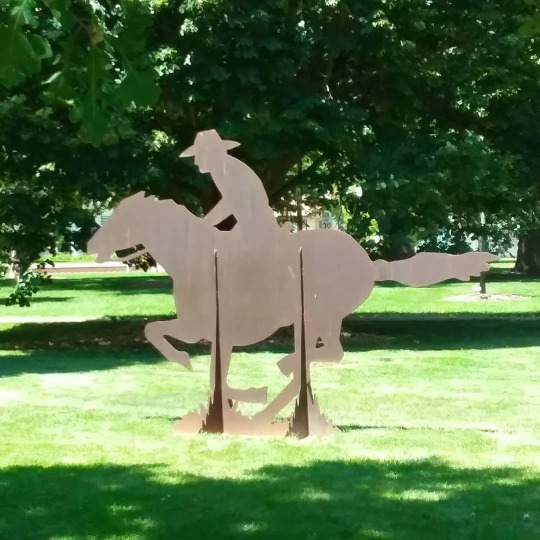

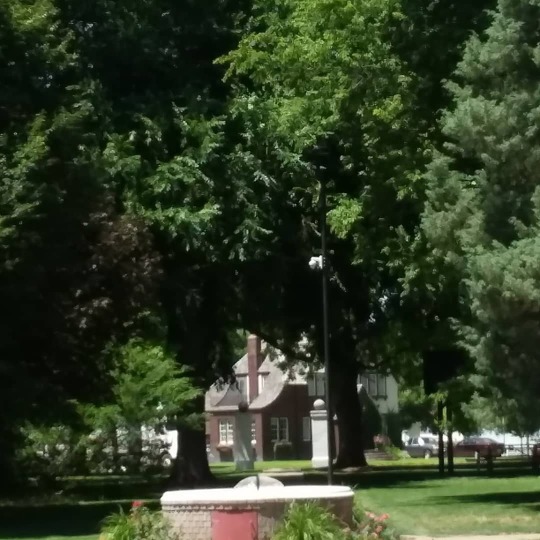
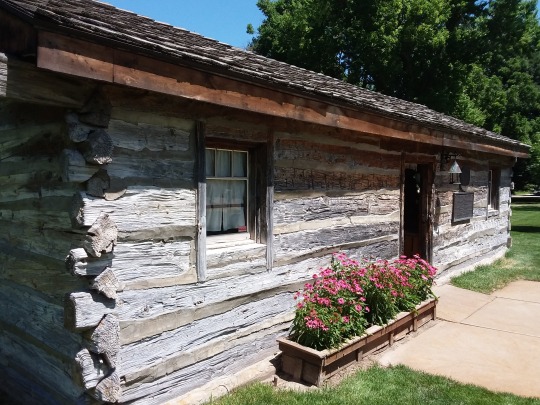
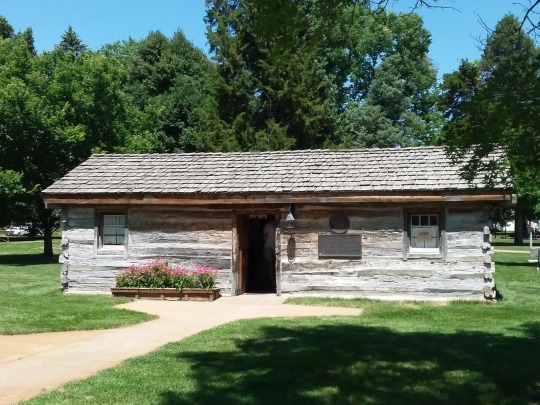

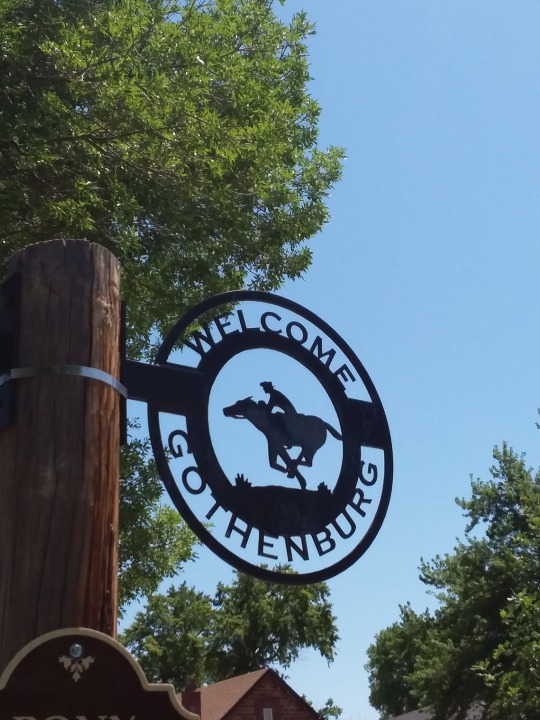
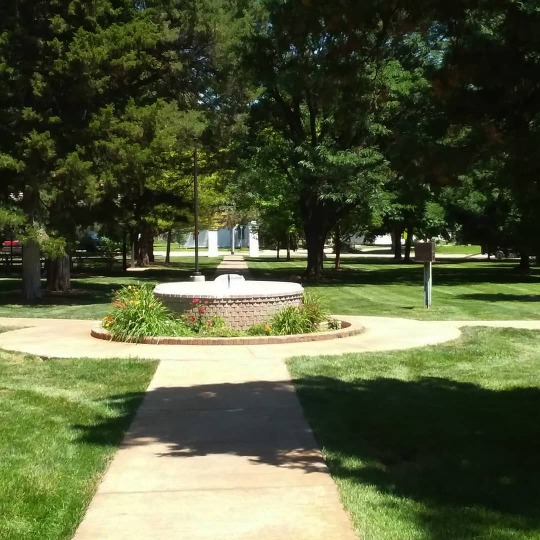
Day 17 in Nebraska
Pony Express Station in Gothenburg, Nebraska
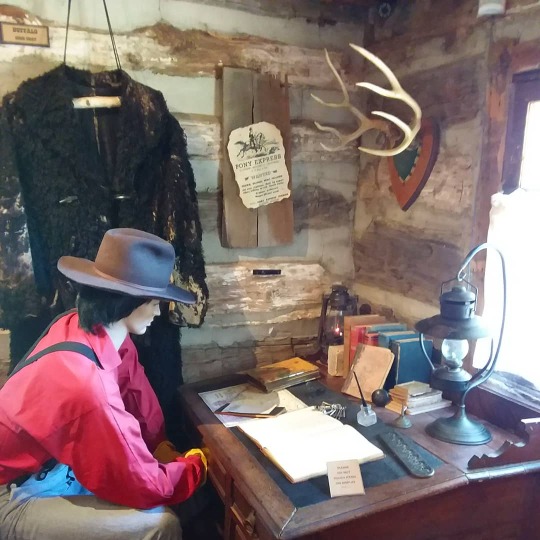
#original photography#architecture#landmark#tourist attraction#vacation#usa#travel#pony express station#gothenburg#nebraska#ehmen park#nature#summer 2019#log cabin#museum#road trip#us history
3 notes
·
View notes
Photo
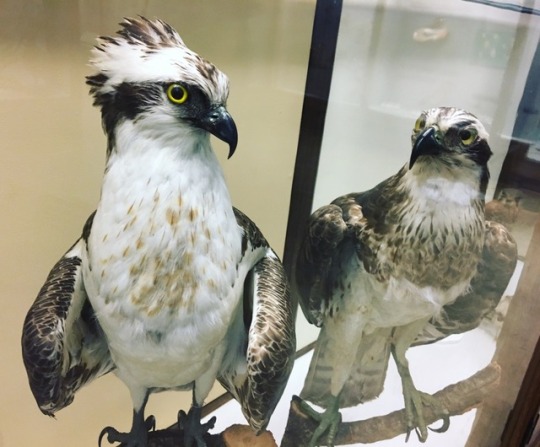

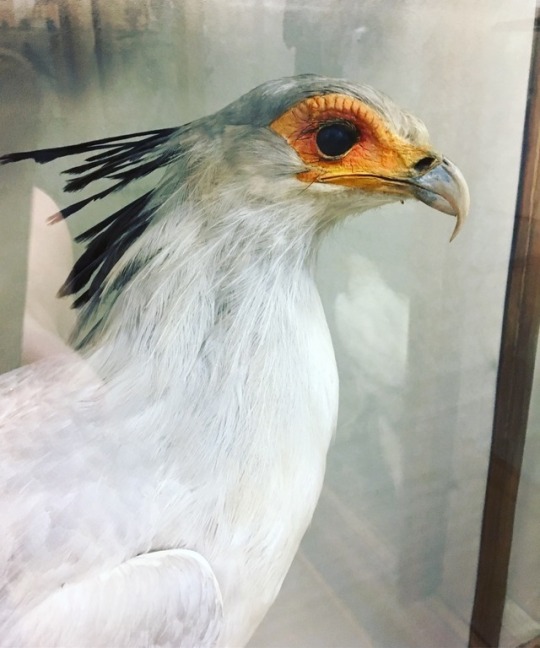


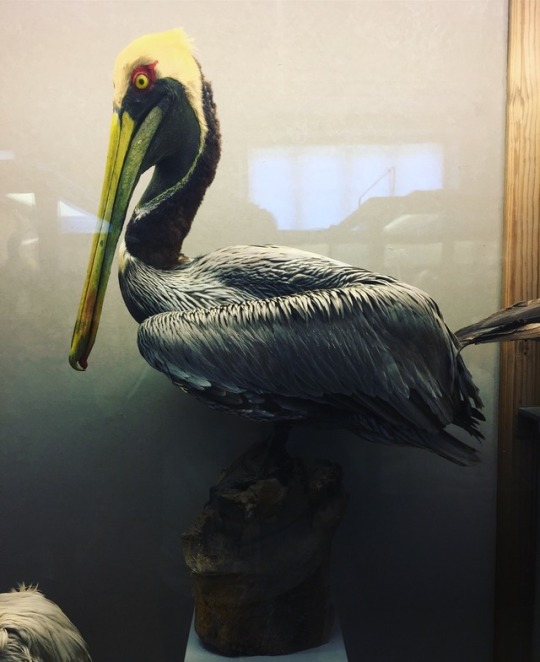
Some beauties from Saturday’s visit at Gothenburgs Museum of Natural History✨
#museum#natural history#gothenburg#birds#birds of prey#hawk#eagle#vulture#vultures#egyptian vulture#bearded vulture#lammergeier#pelican#cassowary#secretary bird#brown pelican
486 notes
·
View notes
Text
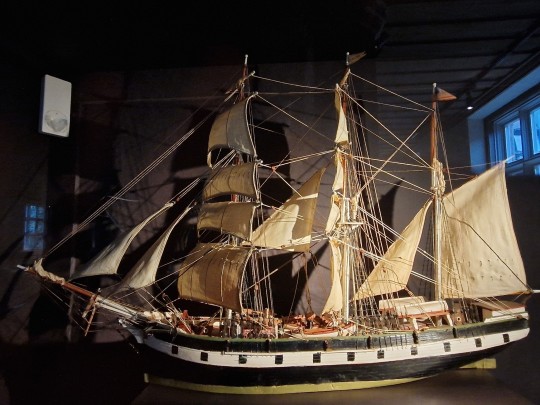
Well sh*t. She's the Lagoda of New Bedford, the same girl as the half-scale model at the whaling museum and gifted first to the Gothenburg maritime museum, then joined the whale exhibition at the natural history museum up the hill. One will be glued to that glass for real next time she visits.
Guess who nerved up and sent that e-mail, @the-golden-vanity ? 😁
16 notes
·
View notes
Text
THE RESULTS ARE OUT list of museums I visited
Göteborg:
Universeum
Gothenburg Museum of Art
Gothenburg Museum of Natural History
Museum of World Culture
Gothenburg City Museum
Stockholm:
The Royal Palace
Museum Tre Kronor
Gustav III's Antique Museum
Noble Prize Museum
Museum of Natural History Stockholm
Fotografiska
Stockholm City Museum
Nordiska Museet
Vasa Museum
Viking Museum
Paradox Museum
Swedish History Museum
Tallinn:
Museum of Puppetry Arts
Tallinn City Museum
Kadriorg Art Museum
Proto Museum
Riga:
Riga City Museum
KGB Museum
War Museum
National Art Museum
Natural History Museum Riga
Museum of Medicine
#ok i'll admit it: i never want to go to a museum again for the next.....two weeks#not that there are any good museums where i live#jay speaks#jaystraveljournal
4 notes
·
View notes
Text
Sigurd Lewerentz, 20th Century Swedish Architect
Sigurd Lewerentz Architect Stockholm, Modern Buildings Sweden, Swedish Design Projects, Woodland Cemetery
Sigurd Lewerentz Architect : Architecture
20th Century Swedish Architecture Practice: Modernist Buildings in Sweden, Europe
27 May 2021
Sigurd Lewerentz Architect Monograph
Major Building by this 20th Century Swedish Architect
Sigurd Lewerentz: Architect Of Death And Life
Major new monograph of Sweden’s most revered architect
Accompanying exhibition at ArkDes, Sweden’s national centre for architecture and design, opens 1st October 2021
Published by Park Books, May 2021 Edited by Kieran Long and Johan Örn Co-edited by Mikael Andersson
Thursday 27th of May 2021 – Sweden’s most revered architect Sigurd Lewerentz, regarded as one of the most important and enigmatic figures of modern European architecture, is the subject of a major new monograph, published in May 2021 by Park Books in collaboration with ArkDes, Sweden’s national centre for architecture and design in Stockholm.
This vast new book offers the most comprehensive survey to date of Lewerentz’s achievements, newly researched from original objects and archival material uncovered across Sweden, featuring over 700 pages of photographs, drawings, and sketches with essays by leading experts exploring Lewerentz’s life, work and legacy.
Edited by Kieran Long, Director of ArkDes, and Johan Örn, curator of collections at ArkDes, and co-edited by Mikael Andersson, architectural historian and critic, this landmark book will be a significant moment of reassessment. An accompanying exhibition opening at ArkDes on 1st October 2021, curated by Kieran Long and designed by Caruso St John, will be the first major monographic exhibition of Lewerentz’s work in over 30 years.
Lewerentz, who was born in Bjärtrå, Ångermanland, in northern Sweden in 1885 and died in Lund 1975, is a mythologised figure in the history of 20th century architecture. Arguably Sweden’s most distinguished modernist, his influence is admired today by a generation of the world’s leading architects.
Architecture devotees from around the world travel to visit his projects, from his late masterpieces St Mark’s Church in Bjorkhagen and St Peter’s Church in Klippan, to Stockholm’s iconic woodland cemetery Skogskyrkogården, now a UNESCO World Heritage site.
Designed by award-winning graphic designer Malmsten Hellberg, this new book features new photography of all of Lewerentz’s major works by the architect and architectural photographer Johan Dehlin, as well as never-before-seen drawings and plans for buildings, furniture and interiors from Lewerentz’s collection at ArkDes.
Kieran Long, Director of ArkDes and Editor of Sigurd Lewerentz: Architect of Death and Life, said: “This monograph is a long-awaited addition to contemporary architecture publishing. There is no Swedish architect with more influence on contemporary architecture today, or with more passionate advocates across the globe, than Sigurd Lewerentz. His work was ubiquitous in the education of all the best architects I had grown up with in my twenty years of writing about, curating and teaching architecture.”
Title Information Sigurd Lewerentz: Architect of Death and Life Published by Park Books in collaboration with ArkDes Eds. Kieran Long and Johan Örn. Co-ed. Mikael Andersson 1st edition, 2021 Hardback
720 pages 23 x 30 cm ISBN 978-3-03860-232-3
Design: Malmsten Hellberg.
New photos of Lewerentz built work: Johan Dehlin.
www.park-books.com
Contributors
Kieran Long has been director of Stockholm’s ArkDes since 2017. Prior to that he established the new Department of Design, Architecture and Digital at the V&A, London.
Johan Örn is an architectural historian and curator of collections at ArkDes.
Mikael Andersson is an architectural historian and critic.
Sigurd Lewerentz
Sigurd Lewerentz was born in the north of Sweden, in Bjärtrå, Västernorrland County, on 29 July 1885, the son of Gustaf Adolf and Hedvig Matilda Lewerentz. He initially trained as a mechanical engineer and an architect at the Chalmers University of Technology in Gothenburg and followed his education with apprenticeships in Berlin and Munich.
When Lewerentz set up an independent practice in Stockholm in 1911, he was joined by his colleague Torsten Stubelius. His first breakthrough came in 1915 when he was awarded first prize in the competition for a new cemetery in Stockholm (The Woodland Cemetery), a proposal created in collaboration with Gunnar Asplund. For the Woodland Cemetery, Lewerentz designed the neoclassical Resurrection Chapel, completed in 1925. A year following his success in the competition of 1915, he won first prize in the competition for a new cemetery in Malmö.
During the 1930s, while Lewerentz was working on the two cemeteries, he made major contributions to the Stockholm Exhibition of 1930 by way of buildings, furniture, and graphic design. Around this time he also realised two major office buildings in Stockholm. He started to design and produce steel windows and other architectural fittings, a side of his practice that gradually absorbed more and more of his time. In the 1940s, he set up his own factory for these purposes in Eskilstuna.
In the mid 1940s Lewerentz oversaw the completion of the Chapels of St. Knut and St. Gertrud, and the Malmö City Theatre – two projects that he had worked on for many years. His notoriety came with the late churches, however: St. Marks in Björkhagen (1960), and St. Peters in Klippan (1966). When Lewerentz died in Lund in 1975, he was regarded as a legend of Swedish architecture.
ArkDes ArkDes, located on the island of Skeppsholmen in central Stockholm, is Sweden’s national centre for architecture and design. It is a museum, a study centre and an arena for debate and discussion about the future of architecture, design and citizenship. It is housed in a beautiful building by Rafael Moneo and more recently ArkDes´ new studio gallery, called Boxen, designed by Dehlin Brattgård Architects.
Park Books Park Books is a European publishing house for architecture and related fields, and an international platform for architectural book projects. Park Books has been established in 2012 as an affiliate of the renowned art, photography, and architectural publishers Scheidegger & Spiess in Zürich and likewise attaches great importance to the design and material quality of its publications.
The books are published predominantly in English and German and thanks to a competent and extensive sales and marketing network, our program is distributed worldwide. The company is independently owned and run by dedicated employees who bring their various strengths and experience to bear on their work.
post updated 4 May 2021
Sigurd Lewerentz Architect – Key Projects
Major Building by this 20th Century Swedish Architect
Chapel of the Resurrection, Woodland Cemetery, Enskede, Stockholm, Sweden Dates built: 1914-34 Architecture competition : 1914 This building design was a collaboration with fellow Swedish architect Erik Gunnar Asplund
Chapel of Resurrection at the Woodland Cemetery in Stockholm, Sweden: photograph : Kalle Söderman, http://kjs.homeip.net, courtesy of Wikimedia commons
Skogskyrkogården (official name in English: The Woodland Cemetery) is a cemetery located in the Enskededalen district south of central Stockholm, Sweden. Its design reflects the development of architecture from Nordic Classicism to mature functionalism. Skogskyrkogården came about following an international architecture competition in 1915 for the design of a new cemetery in Enskede in the southern part of Stockholm, Sweden. The entry called “Tallum” by this couple of young Swedish architects was selected.
Sigurd Lewerentz Buildings
St. Mark’s Church, Bjorkhagen Date built: 1956-60
St. Peter’s Church, Klippan, Sweden Date built: 1963-66
More Sigurd Lewerentz Architect info online soon
Location: Bjarta, Sweden, north east Europe
Sigurd Lewerentz Architect Practice Information
This celebrated Swedish architect was born in 1885 and died in 1975
Sigurd was born in Bjarta, Sweden. Lewerentz and Asplund are generally recognised as two of the greatest Swedish architects of the 20th Century in Sweden, and came to worldwide attention. Most histories of World Architecture reference them and their collaboration – the Woodland Cemetery. Lewerentz was a Swedish Modernist. He died in Lund, Sweden in 1975.
His most celebrated work is surely Skogskyrkogården in Stockholm. The architects’ use of the natural landscape created an extraordinary environment of tranquil beauty that had a profound influence on cemetery design throughout the world.
Skogskyrkogården – Chapel of Resurrection, Woodland Cemetery, Stockholm, Sweden: photo : Arild Vågen, CC BY-SA 3.0 <https://ift.tt/nyd3RQ>, via Wikimedia Commons
The giant dark granite cross at the focus of the vista from the main entrance may have been based on a painting by Caspar David Friedrich, titled “Cross on the Baltic Sea” (1815), however the architects insisted that it was open to non-Christian interpretations.
Swedish Architectural Designs
Swedish Architecture
Swedish Architecture Designs – chronological list
Swedish Architects
Swedish Architecture
Jo¨nko¨ping Bathhouse, Lake Vättern, Jönköping, southern Sweden Design: White Arkitekter photo © Jo¨nko¨ping Bathhouse Jo¨nko¨ping Bathhouse Building in Sweden
20th Century Architecture
Modern Architecture
Modern Architects
Architecture Studios
Buildings / photos for the Modern Swedish Architect Sigurd Lewerentz page welcome
Website: Building
The post Sigurd Lewerentz, 20th Century Swedish Architect appeared first on e-architect.
3 notes
·
View notes



